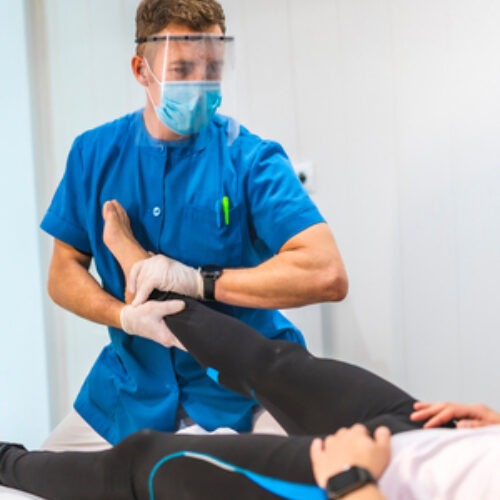
As an essential part of the healthcare system, physical therapists face a certain expectation to provide quality care to their patients – even during a pandemic. In these past few months, many have been conflicted with their moral obligation to provide services, and concern for the health and well-being of their own families. Many PTs faced fear of furlough or layoff, while conversely being pressured by family and loved ones to close their facilities. It is an ethical dilemma – Do we continue to work and risk spreading COVID in the community? Or do we close our doors and deny needed services to our patients?
Important Changes
I have always been proud to be a physical therapist, and am also proud that members of our profession stepped up during this unprecedented and challenging time. Outpatient physical therapy offices pressed forward to address the needs of our patients, while preventing the spread of COVID by implementing strict safety standards. We donned masks and gloves, doubled down on the cleaning, implemented health screening questions and regular temperature checks, increased hand washing, and incorporated social distancing within the clinic. We reduced the amount of staffing in our clinics, to ensure the least amount of people possible in the space. This came at a cost however, as we watched many of our colleges be placed on furlough.
Switching to Telehealth
For those patients that could not risk entering an outpatient facility, PTs quickly pivoted to telehealth. Some wondered, how do we provide physical therapy via telemedicine? We learned that we were indeed able to provide quality skilled therapy in this new format. We focused on education, including relaxation techniques for patients in pain and suffering due to isolation. Because so many people were working from home in less-than-ideal ergonomic sitting situations, we educated on home ergonomics and desk setups.
I can think of nothing more powerful for a patient to learn that they have the ability to manage pain though improved ergonomics, movements, and exercise.
We actually had an advantage, as we were now able to see the patient in their own environment! Thanks to telemedicine, not only could we see a patient’s desk setup but also their environment for sweeping, laundry, vacuuming, and childcare. We found clever ways to teach self unloading for the spine, self massage techniques, and stretching. We were able to teach the patient functional exercise using resistance bands, home pulleys, exercise balls, foam rolls, and free weights. Ultimately, we learned how to do physical therapy without “physical touch”.
I can think of nothing more powerful for a patient to learn that they have the ability to manage pain though improved ergonomics, movements, and exercise. And as for me, I found telehealth not only a life line for my patients, but for the survival of my job. As things start to “return to normal” I am happy to see the return of our furloughed colleges as well as patients feeling more comfortable about returning to the clinics. Telehealth visits are on the decline – but will become a new modality in the world of physical therapy.

